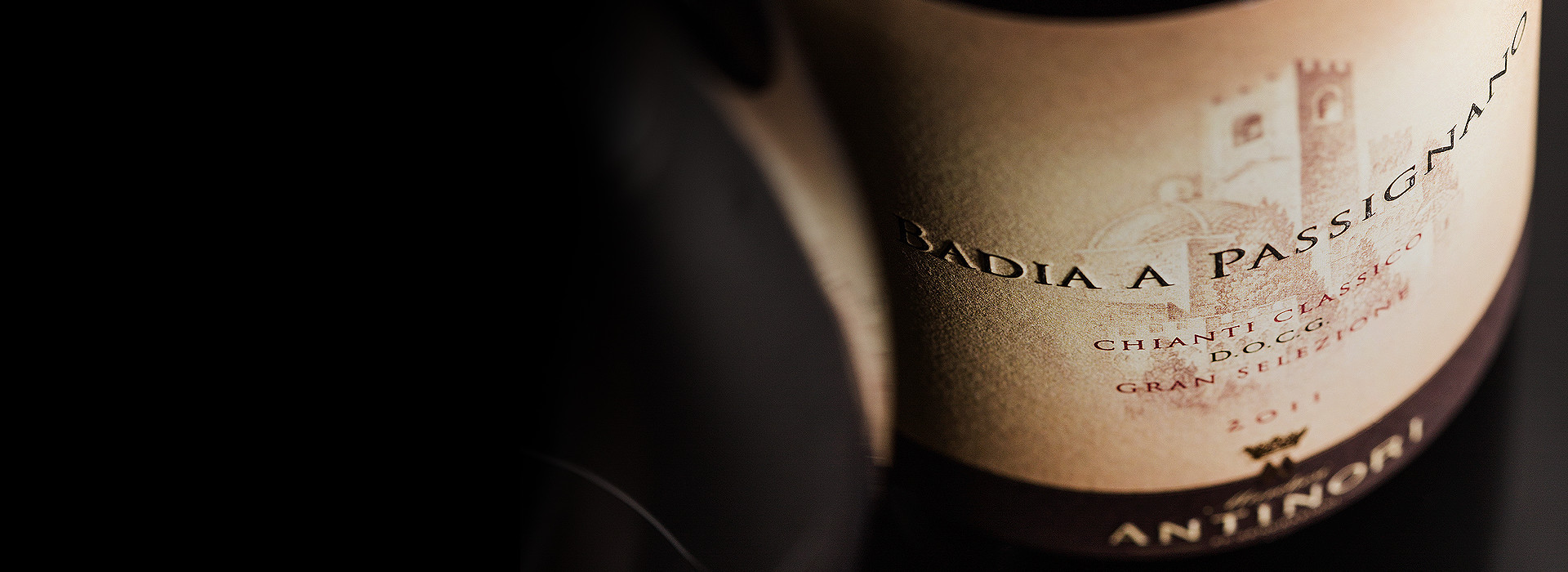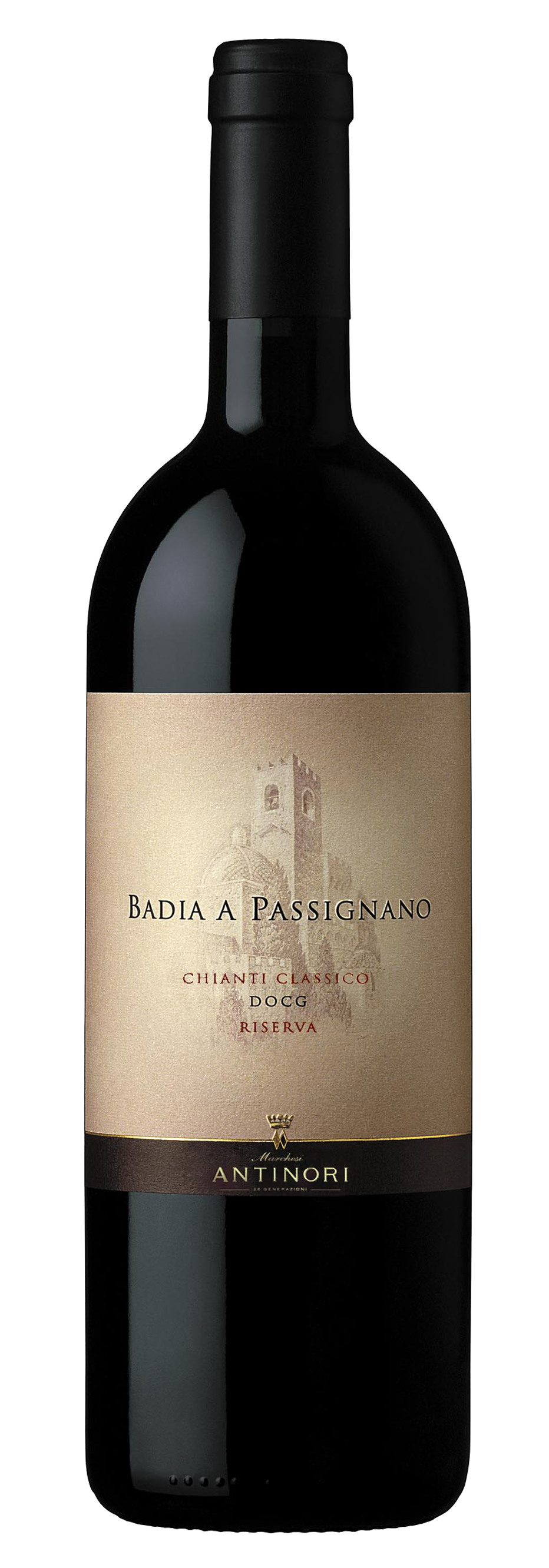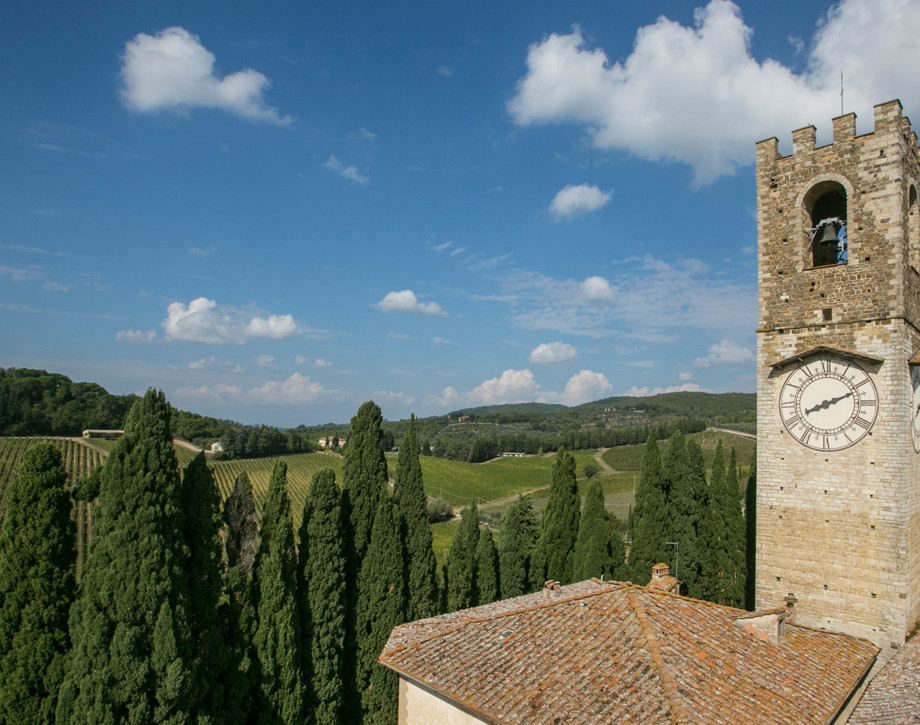Badia a Passignano

Climate
The growing season was initially characterized by a late autumn of 2007 and a winter of 2008 which were neither particularly cold nor wet, conditions which favored an early budding of the vine compared to preceding vintages. The spring, with the first appearance of vine vegetation, was marked by adverse weather: frequent rainfall until the end of May. This caused a slowing of plant growth, but did not compromise the health of the vineyard and vines. June and July, instead, were very warm and only August saw occasional precipitations which assisted the vineyards to continue the development of their vegetation and grapes. September and October were highly favorable to picking operations, assisted by the excellent daily temperature swings from daytime to nighttime, particularly helpful to Sangiovese and optimal for the overall quality of the grapes. The Sangiovese harvest began during the second half of September and lasted until the tenth of October; the harvested grapes were of very high quality and totally ripe. From the very beginning of fermentation operations the musts showed fine aromas and flavors and a very interesting color, all of which promised wines of a notable quality level.
Vinification
Favorable weather during the harvest period and, above all, the extremely high quality of the grapes, allowed picking to go forward in as selective and targeted a way as possible, parcel by parcel on the basis of the ripeness level of the various parts of the vineyard. The grapes were hand harvested in order to guarantee a careful selection of only the finest bunches an operation which was facilitated by the excellent health of the grapes. After destemming and a soft pressing, essential for the conservation of the typical character and aromas of Sangiovese, the must went into stainless steel fermenting tanks where it fermented and macerated on its skins. The must remained in contact with the skins with periodic pumping over of the cap and delestage (rack and return) techniques, both carried out as softly as possible, in order to guarantee an intense extraction but one which, at the same time, would maintain elegance and suppleness of tannins. From the very beginning of the fermentation process the musts showed great tonal richness, a direct result of the weather of the growing season which alternated warm days and cool, or even cold, evenings and nights. The fermentation, in the sense of the transformation of the sugar into alcohol, lasted seven days and was followed by an additional two week period of contact on the skins. After the wine was run off its skins, it went immediately into 60 and 75 gallon barrels of Hungarian oak and partly, into 60 gallon French oak barrels, where it went through a complete malolactic fermentation and then aged for fourteen months. During this lengthy period, the various lots were regularly tasted and analyzed in order to assure maximum quality levels during this aging phase and then blended during the last part of the aging period. The final blend was then bottled and given an additional twelve months period of bottle aging before commercial release.
Historical data
Badia a Passignano Gran Selezione is produced exclusively from the finest Sangiovese grapes harvested from its namesake vineyard located in the heart of the Chianti Classico region. The region has been respected and appreciated for its outstanding wine production since the year 1000. The vineyards grow at an altitude of approximately 300 meters (984 feet) above sea level on soils rich in limestone with a fair amount of clay. The wine is aged in the historic cellars under the Badia (abbey) of Passignano that dates back to the 10th century.
Tasting Notes
The wine, one with an important impact, shows an intense ruby red in its tonality. It is complex on the nose with aromas of red berry fruit, raspberries, blackberries, and ripe cherries in addition to its notes of spice and licorice on the finish. The flavors are ripe and sweet and are sustained by substantial tannins, round and ample in support of the supple and velvety structure. Long and persistent, its tonic acidity is a classic characteristic of the Sangiovese cultivated at the Badia a Passignano.
Awards
I Vini Di Veronelli 2012 Super Tre Stelle Italia Wine Advocate 92/100 USA Antonio Galloni 92/100 USA

The Wine
Badia a Passignano Gran Selezione is produced exclusively from the finest Sangiovese grapes harvested from its namesake vineyard located in the heart of the Chianti Classico region. The region has been respected and appreciated for its outstanding wine production since the year 1000. The vineyards grow at an altitude of approximately 300 meters (984 feet) above sea level on soils rich in limestone with a fair amount of clay. The wine is aged in the historic cellars under the Badia (abbey) of Passignano that dates back to the 10th century.

Climate
The growing season was initially characterized by a late autumn of 2007 and a winter of 2008 which were neither particularly cold nor wet, conditions which favored an early budding of the vine compared to preceding vintages. The spring, with the first appearance of vine vegetation, was marked by adverse weather: frequent rainfall until the end of May. This caused a slowing of plant growth, but did not compromise the health of the vineyard and vines. June and July, instead, were very warm and only August saw occasional precipitations which assisted the vineyards to continue the development of their vegetation and grapes. September and October were highly favorable to picking operations, assisted by the excellent daily temperature swings from daytime to nighttime, particularly helpful to Sangiovese and optimal for the overall quality of the grapes. The Sangiovese harvest began during the second half of September and lasted until the tenth of October; the harvested grapes were of very high quality and totally ripe. From the very beginning of fermentation operations the musts showed fine aromas and flavors and a very interesting color, all of which promised wines of a notable quality level.
Vinification
Favorable weather during the harvest period and, above all, the extremely high quality of the grapes, allowed picking to go forward in as selective and targeted a way as possible, parcel by parcel on the basis of the ripeness level of the various parts of the vineyard. The grapes were hand harvested in order to guarantee a careful selection of only the finest bunches an operation which was facilitated by the excellent health of the grapes. After destemming and a soft pressing, essential for the conservation of the typical character and aromas of Sangiovese, the must went into stainless steel fermenting tanks where it fermented and macerated on its skins. The must remained in contact with the skins with periodic pumping over of the cap and delestage (rack and return) techniques, both carried out as softly as possible, in order to guarantee an intense extraction but one which, at the same time, would maintain elegance and suppleness of tannins. From the very beginning of the fermentation process the musts showed great tonal richness, a direct result of the weather of the growing season which alternated warm days and cool, or even cold, evenings and nights. The fermentation, in the sense of the transformation of the sugar into alcohol, lasted seven days and was followed by an additional two week period of contact on the skins. After the wine was run off its skins, it went immediately into 60 and 75 gallon barrels of Hungarian oak and partly, into 60 gallon French oak barrels, where it went through a complete malolactic fermentation and then aged for fourteen months. During this lengthy period, the various lots were regularly tasted and analyzed in order to assure maximum quality levels during this aging phase and then blended during the last part of the aging period. The final blend was then bottled and given an additional twelve months period of bottle aging before commercial release.
Historical data
Badia a Passignano Gran Selezione is produced exclusively from the finest Sangiovese grapes harvested from its namesake vineyard located in the heart of the Chianti Classico region. The region has been respected and appreciated for its outstanding wine production since the year 1000. The vineyards grow at an altitude of approximately 300 meters (984 feet) above sea level on soils rich in limestone with a fair amount of clay. The wine is aged in the historic cellars under the Badia (abbey) of Passignano that dates back to the 10th century.
Tasting Notes
The wine, one with an important impact, shows an intense ruby red in its tonality. It is complex on the nose with aromas of red berry fruit, raspberries, blackberries, and ripe cherries in addition to its notes of spice and licorice on the finish. The flavors are ripe and sweet and are sustained by substantial tannins, round and ample in support of the supple and velvety structure. Long and persistent, its tonic acidity is a classic characteristic of the Sangiovese cultivated at the Badia a Passignano.
Awards
I Vini Di Veronelli 2012 Super Tre Stelle Italia Wine Advocate 92/100 USA Antonio Galloni 92/100 USA

Badia a Passignano
Badia a Passignano is located above the town of Sambuca Val di Pesa, just 3 kilometers south of the Tenuta Tignanello estate. The property extends over an area of 223 hectares (551 acres), of which 65 hectares (160 acres) are planted with vines. The vineyards grow at an altitude that varies between 250 meters (820 feet) and 300 meters (984 feet) above seal level on calcareous soil in one of the most naturally endowed and beautiful environments in the Chianti Classico region. The estate’s historical importance in the Chianti region is well documented in hundreds of volumes that are kept in the Florence State Archives that provide descriptions and details about the Sangiovese vineyards and local crops over the centuries. Further proof of this came to light in 1983 when a thousand year old vitis vinifera plant was discovered on the land surrounding Badia a Passignano.

Soil
Predominantly calcareous
















